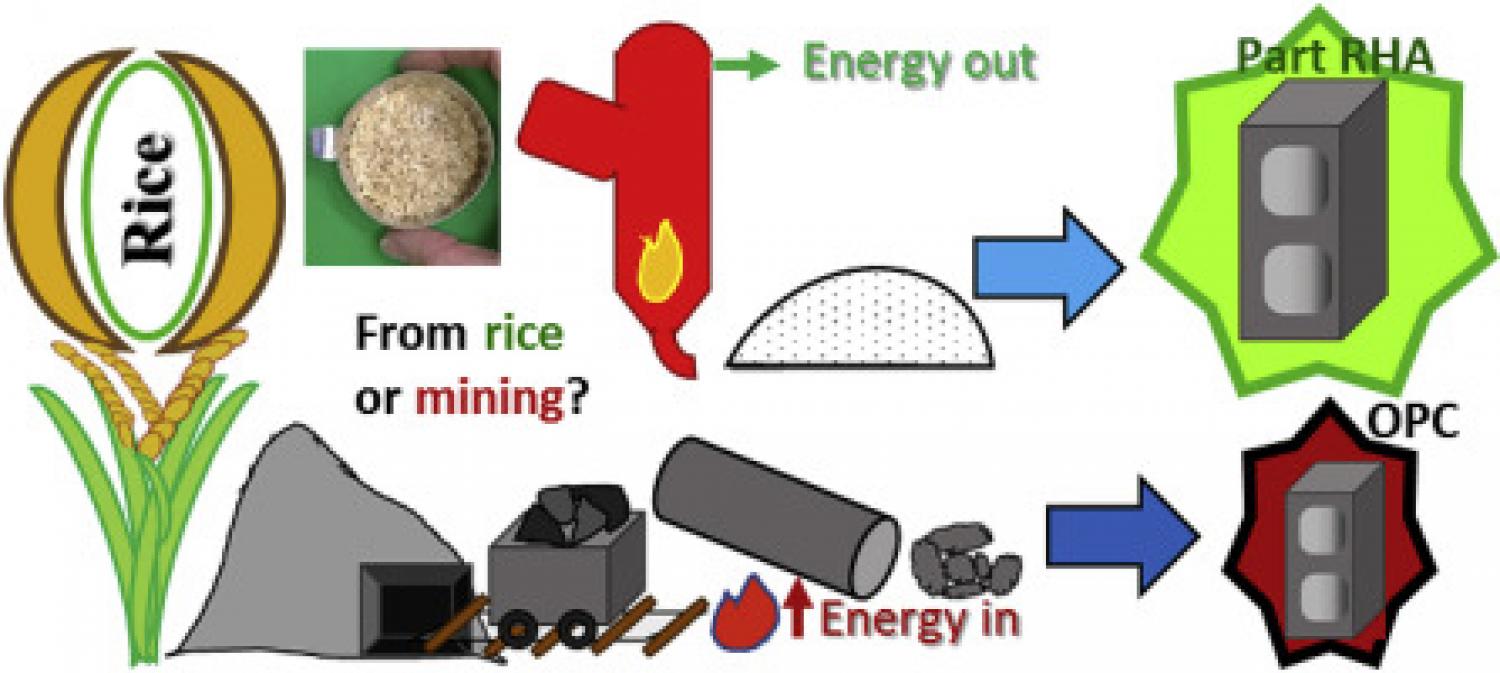
Elsevier, Case Studies in Chemical and Environmental Engineering, Volume 2, September 2020
After water, concrete is the second most used material in the world. Using life cycle assessments, concrete has typically been found to be 80% of a residential building by weight. Cement production consumes large amounts of energy, motivating a search for sustainable alternatives. Rice husk ash produced in controlled combustion has been found to be a viable replacement for cement. Renewable and sustainable, rice husks have the potential to produce energy while yielding an ash product for use in concrete. A “cradle to gate” Embodied Energy study incorporated the combustion process and transportation of rice husk ash to a concrete mixing facility. The main energy losses in the process were found to be furnace inefficiency, feed preheating, and auxiliary equipment. Rice husk ash transportation was found to be unimportant in comparison. For one kg of pozzolanic rice husk ash an embodied energy of -26 MJ was found, with the negative sign indicating that energy is produced in the overall process. A comparison of rice husk ash's embodied energy to the high and positive embodied energy of Portland cement should encourage further investigation into replacing some of cement binder with pozzolanic rice husk ash for use in building materials.
